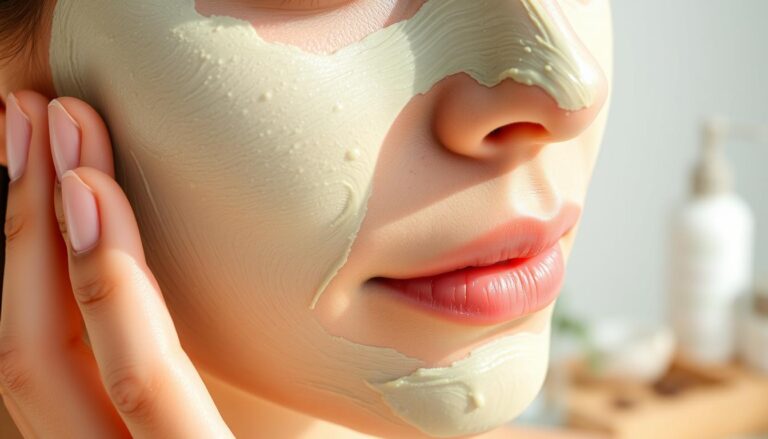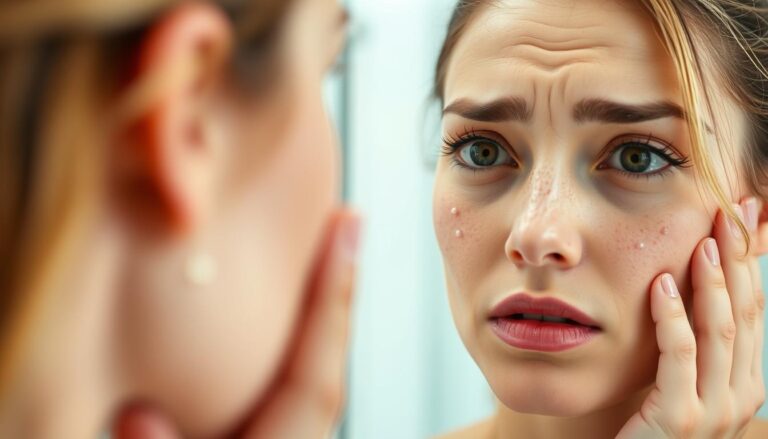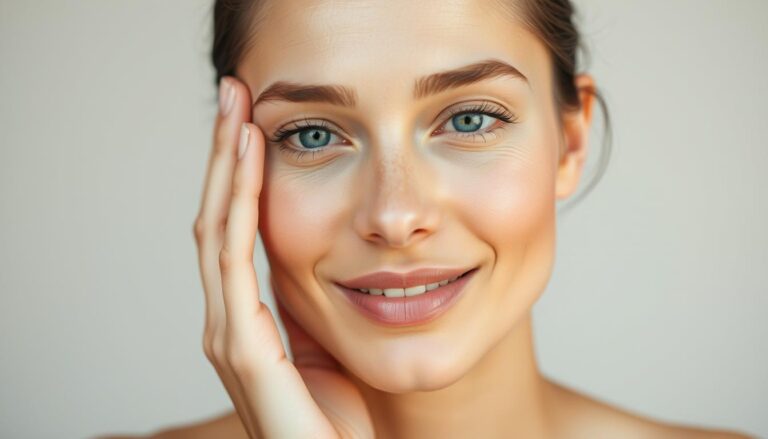At Glowskinhub.com, we believe beauty isn’t just a look—it’s a feeling
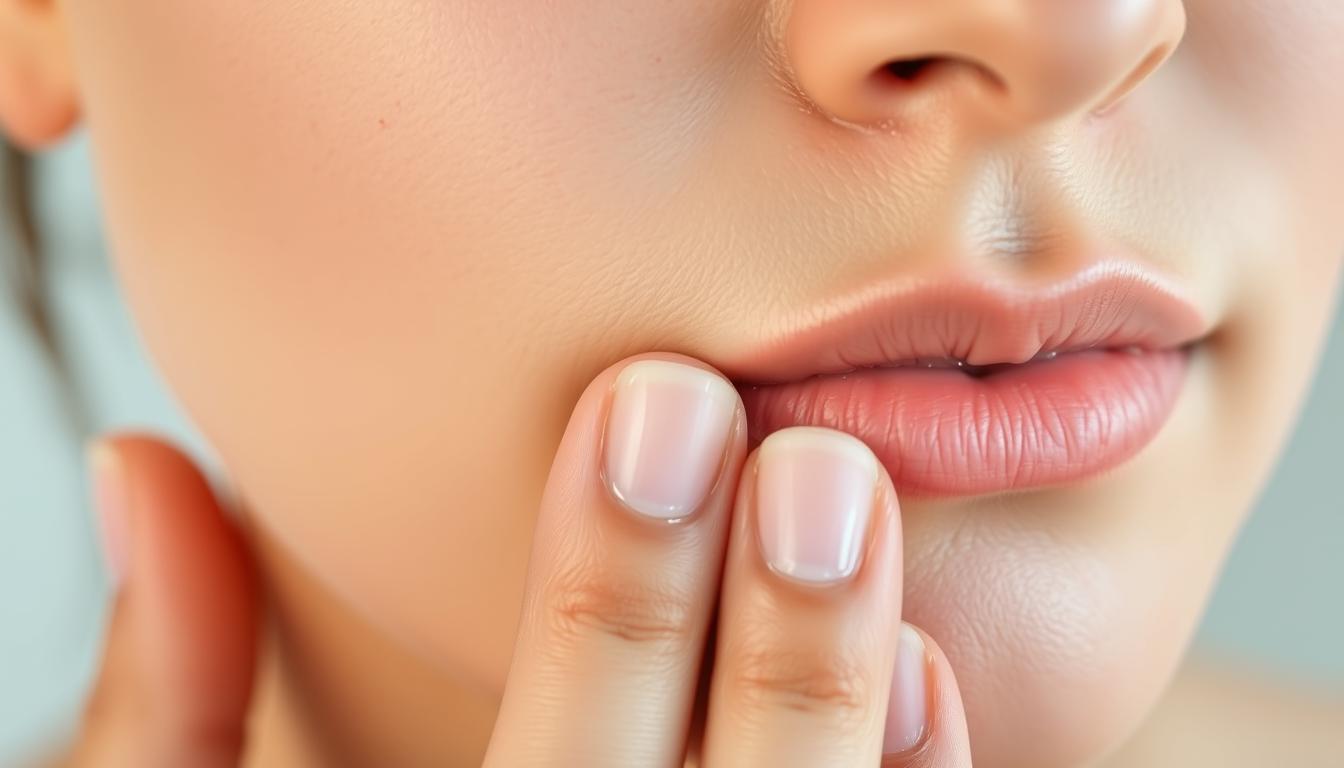
How to get rid of blackheads without squeezing
Blackheads can be a persistent and frustrating Skin issue, often appearing on the nose, forehead, and chin. Squeezing them might seem like a quick fix, but it can lead to further inflammation, scarring, and prolonged healing times.
Avoiding the temptation to squeeze is crucial for maintaining healthy Skin. Instead, there are several effective methods to eliminate blackheads without causing damage. This article will explore these alternatives, providing you with a comprehensive guide on how to tackle blackheads safely.
Key Takeaways
- Understand the causes of blackheads and why squeezing is not recommended
- Learn about effective, non-invasive treatments for blackheads
- Discover simple skincare routines to prevent blackheads
- Explore professional treatments for persistent blackheads
- Find out how to maintain healthy, blackhead-free Skin
Understanding Blackheads: What They Are and Why They Form
Understanding the nature of blackheads is crucial for developing an effective skincare routine. Blackheads are a type of comedone that forms when pores on the Skin become clogged with dead Skin cells, oil, and other debris.
The Science Behind Blackhead Formation
Blackheads are not caused by dirt, as is commonly believed, but by the oxidation of the material clogging the pore.
How Oxidation Creates the Black Appearance
When the trapped debris in the pore comes into contact with air, it oxidizes, resulting in the characteristic black appearance. This process is similar to how a cut apple turns brown when exposed to air.
Difference Between Blackheads and Other Blemishes
Blackheads are distinct from other types of acne and Skin blemishes. Unlike whiteheads, which are also comedones, blackheads are open to the surface of the Skin, allowing the trapped material to oxidize.
Common Causes of Blackheads
Several factors contribute to the formation of blackheads, including excess oil production and dead Skin cell buildup.
Excess Oil Production
Overproduction of sebum can lead to clogged pores, as the excess oil mixes with dead Skin cells and other debris.
Dead Skin Cell Buildup
The natural shedding of Skin cells can sometimes lead to a buildup of cells within the pores, contributing to blackhead formation.
| Cause | Description | Impact on Skin |
|---|---|---|
| Excess Oil Production | Overproduction of sebum | Clogged pores, blackheads |
| Dead Skin Cell Buildup | Accumulation of dead Skin cells | Pore clogging, blackhead formation |
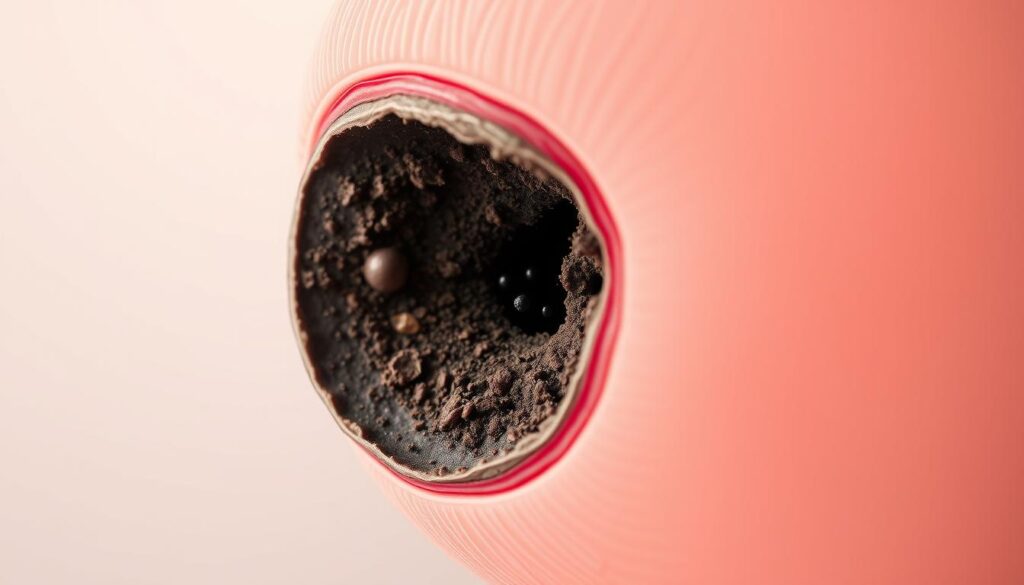
Why Squeezing Is Harmful to Your Skin
While it might be tempting to squeeze blackheads, this can lead to further Skin problems.
Potential Scarring and Inflammation
Squeezing can cause inflammation and potentially lead to scarring, making the Skin appear worse than before.
How Squeezing Can Spread Bacteria
Squeezing blackheads can push bacteria and other debris deeper into the Skin, leading to more severe acne and other Skin issues.
Essential Skincare Habits to Prevent Blackheads
To keep blackheads at bay, it’s essential to understand and implement key skincare practices. Developing a consistent routine can significantly improve the appearance of your Skin.
Proper Cleansing Techniques for Oily Skin
Cleansing is the foundation of any skincare routine, especially for those with oily Skin prone to blackheads. It’s crucial to remove dirt, oil, and makeup without stripping the Skin of its natural oils.
Double Cleansing Method
The double cleansing method involves using an oil-based cleanser followed by a water-based cleanser. This technique ensures a deep cleanse, removing both oil and water-based impurities.
Benefits of Double Cleansing:
- Effective removal of makeup and sunscreen
- Deep cleansing of pores
- Helps in controlling oil production
Best Cleansing Times and Frequency
Cleansing your face twice a day, morning and night, is generally recommended. However, if you have very oily Skin, you might need to cleanse more frequently.
The Importance of Regular Exfoliation
Exfoliation is key to removing dead Skin cells and unclogging pores, which can help reduce the appearance of blackheads.
Chemical vs. Physical Exfoliants
Chemical exfoliants, such as alpha-hydroxy acids (AHAs) and beta-hydroxy acids (BHAs), dissolve dead Skin cells, while physical exfoliants, like scrubs and brushes, physically remove them.
| Exfoliant Type | Benefits | Suitability for Oily Skin |
|---|---|---|
| Chemical | Deeply penetrates pores, gentle on Skin | Highly suitable |
| Physical | Immediate results, can be more abrasive | Moderately suitable; be gentle |
How Often to Exfoliate Oily Skin
For oily Skin, exfoliating 2-3 times a week is often recommended. However, this can vary based on Skin sensitivity and the type of exfoliant used.
Hydration and Moisturising Strategies
Even oily Skin needs hydration. Using the right moisturiser can help balance oil production and keep the Skin healthy.
Lightweight Formulas for Oily Skin
Look for oil-free or lightweight moisturisers that won’t clog pores. Gel or Serum-based moisturisers are often good options.
Oil-Free Hydration Options
Products containing hyaluronic acid or glycerin can provide hydration without adding oil to the Skin.

By incorporating these essential skincare habits into your daily routine, you can significantly reduce the occurrence of blackheads and maintain healthier, clearer Skin.
Effective Ingredients That Combat Blackheads
Blackheads can be particularly stubborn, but certain ingredients have been proven to combat them effectively. Understanding these ingredients and how they work is crucial for anyone looking to improve their skincare routine and reduce the occurrence of blackheads.
Salicylic Acid: The Blackhead Fighter
Salicylic acid is a beta hydroxy acid that is widely recognised for its ability to penetrate deep into pores, helping to unclog them and reduce blackhead formation.
How It Works Inside Pores
It works by dissolving the debris that clogs pores, including dead Skin cells and excess oil, thereby preventing the formation of blackheads.
Recommended Concentrations
For effective blackhead control, products containing between 0.5% to 2% salicylic acid are recommended.
Retinoids and Their Benefits for Pore Health
Retinoids, derivatives of vitamin A, are another powerful tool in the fight against blackheads. They help prevent clogged pores by promoting cell turnover.
Over-the-Counter vs. Prescription Options
While over-the-counter retinoids can be effective, prescription-strength retinoids may offer more significant benefits for severe cases.
How to Introduce Retinoids to Your Routine
Start with a lower concentration to allow your Skin to adjust, gradually increasing as needed.
Niacinamide and Other Supporting Ingredients
Niacinamide is known for its oil-regulating benefits and can be particularly useful in controlling blackheads.
Oil-Regulating Benefits
It helps to improve the Skin’s barrier function, reducing inflammation and sebum production.
Complementary Ingredients for Best Results
Combining niacinamide with other ingredients like salicylic acid or retinoids can enhance its effectiveness.
When selecting products for oily Skin prone to blackheads, look for these ingredients. Here’s a summary of their benefits:
| Ingredient | Benefits |
|---|---|
| Salicylic Acid | Unclogs pores, reduces blackheads |
| Retinoids | Promotes cell turnover, prevents clogged pores |
| Niacinamide | Regulates oil, reduces inflammation |
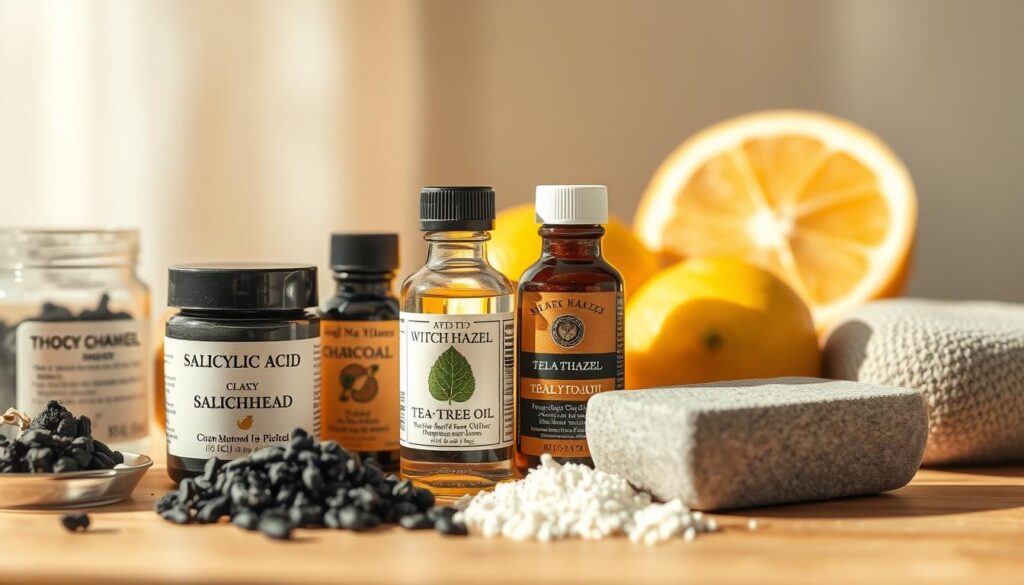
By incorporating products with these ingredients into your skincare routine, you can more effectively combat blackheads and achieve clearer Skin.
How to Get Rid of Blackheads Without Squeezing: Gentle Extraction Methods
Adopting gentle extraction techniques is crucial for maintaining healthy Skin while removing blackheads. For individuals with oily Skin, incorporating these methods into their oily Skin regimen can significantly improve Skin clarity.
Using Pore Strips Correctly and Safely
Pore strips can be an effective tool for removing blackheads when used correctly. To maximise their effectiveness, it’s essential to follow the right preparation and aftercare steps.
Preparation Steps for Maximum Effectiveness
- Cleanse your Skin thoroughly before applying the strip.
- Use a gentle cleanser and lukewarm water to open up your pores.
- Pat dry your Skin before applying the pore strip.
Aftercare to Prevent Recurrence
After using pore strips, apply a toner to help close the pores and reduce the appearance of large pores. Maintaining a consistent oily Skin regimen that includes regular cleansing and moisturising can help prevent blackheads from forming again.
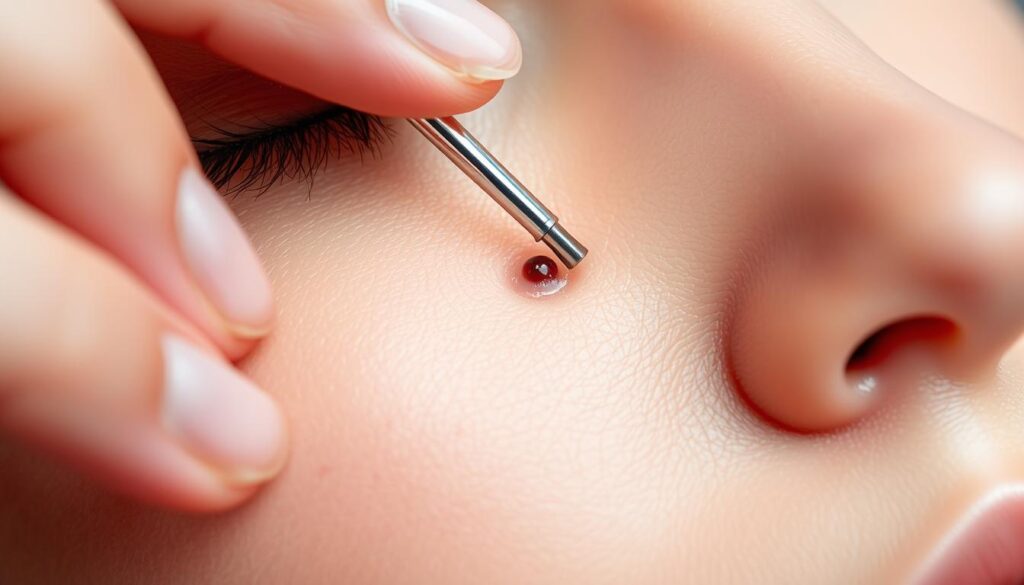
Blackhead Removal Tools: Proper Technique
Blackhead removal tools can be effective when used with the right technique. Ensuring these tools are sterilised and used gently is key to avoiding Skin damage.
Sterilisation and Safety Precautions
Always sterilise your blackhead removal tools before and after use to prevent infection. Using gentle pressure is also crucial to avoid damaging the Skin.
Gentle Pressure Methods
Apply gentle pressure around the blackhead to encourage removal without causing trauma to the Skin. This method, combined with a consistent skincare routine, can help maintain clear Skin.
Professional Extraction Techniques You Can Try at Home
Some professional extraction techniques can be safely mimicked at home. However, it’s crucial to know when to stop and seek professional help to avoid causing more harm than good.
Mimicking Salon Treatments Safely
Using the right products and techniques can help you achieve salon-like results at home. Be cautious and gentle to avoid irritating your Skin.
When to Stop and Seek Help
If you find that your blackheads persist or worsen, it may be time to consult a dermatologist. They can provide personalised advice and treatment as part of a comprehensive oily Skin regimen.
DIY Home Remedies for Blackhead Removal
For those seeking a more natural approach to skincare, DIY home remedies offer a gentle solution to blackheads. These remedies are not only effective but also easy to prepare using ingredients commonly found at home.
Clay and Charcoal Masks for Deep Cleansing
Clay and charcoal masks are renowned for their ability to draw out impurities from the Skin, making them an excellent oily Skin treatment. They work by absorbing excess oil and unclogging pores, thereby reducing the appearance of blackheads.
Different Types of Clay for Various Skin Needs
Different clays offer different benefits. For instance, kaolin clay is gentle and suitable for sensitive Skin, while bentonite clay is more absorbent and ideal for oily Skin.
- Kaolin clay: Gentle, suitable for sensitive Skin
- Bentonite clay: Highly absorbent, ideal for oily Skin
- Rhassoul clay: Rich in silica and magnesium, great for nourishing the Skin
How to Apply for Best Results
To get the most out of your clay or charcoal mask, apply it evenly to the face, avoiding the eye area. Leave it on for 10-15 minutes before rinsing off with warm water.

Natural Exfoliants from Your Kitchen
Exfoliating is a crucial step in any skincare routine, helping to remove dead Skin cells and unclog pores. Natural exfoliants like sugar and oatmeal are gentle yet effective.
Honey and Sugar Scrubs
Mixing honey with sugar creates a nourishing scrub that not only exfoliates but also moisturizes the Skin. The antibacterial properties of honey can help in reducing acne and preventing future breakouts.
Oatmeal-Based Treatments
Oatmeal is known for its soothing properties and can be used to create a gentle exfoliant when ground and mixed with water or honey. It’s particularly beneficial for sensitive Skin.
Steam Treatments to Open and Purify Pores
Steaming your face is a simple yet effective way to open up your pores and loosen any debris that may be causing blackheads.
Safe Steaming Methods
To steam your face, boil some water, then lean over it with a towel covering your head to trap the steam. Be cautious not to get too close to avoid burns.
Herbal Additions for Enhanced Benefits
Adding herbs like chamomile or calendula to your steam can enhance its benefits, providing a calming and anti-inflammatory effect on the Skin.
| Remedy | Benefits | Skin Type |
|---|---|---|
| Clay Mask | Deep cleansing, reduces blackheads | Oily, combination |
| Honey and Sugar Scrub | Exfoliates, moisturizes, antibacterial | All Skin types |
| Oatmeal Treatment | Soothes, gently exfoliates | Sensitive, dry |
“The key to effective blackhead removal lies in maintaining clean, exfoliated Skin and using the right treatments for your Skin type.”
Best Products for Oily Skin Prone to Blackheads
The quest for the perfect skincare products for oily Skin and blackheads requires understanding the key ingredients and product types that work best. Oily Skin prone to blackheads demands a careful selection of products that not only control oil production but also address the root causes of blackheads.
Cleansers That Actually Work on Stubborn Blackheads
Cleansers play a crucial role in managing oily Skin and blackheads. For effective blackhead removal and prevention, it’s essential to choose a cleanser that is formulated to tackle these issues.
Gel and Foam Formulations
Gel and foam cleansers are highly effective for oily Skin as they help in deep cleansing without leaving a residue. Look for products containing salicylic acid or glycolic acid, which help in exfoliating the Skin and unclogging pores.
- CeraVe Renewing SA Cleanser
- Neutrogena Hydrating Facial Cleanser
Balancing Cleansers That Don’t Strip
It’s crucial to find a cleanser that balances the Skin’s pH and doesn’t strip it of its natural oils. Ingredients like niacinamide can help in improving the Skin’s barrier function.
“A good cleanser should effectively remove dirt and oil without drying out the Skin, maintaining the Skin’s natural balance.”
Effective Toners and Serums for Oily Skin
Toners and serums are vital in a skincare routine for oily Skin prone to blackheads. They help in further cleansing, balancing the Skin’s pH, and delivering active ingredients that target blackheads.
Alcohol-Free Options
Alcohol-free toners are recommended as they won’t dry out the Skin. Instead, look for toners with witch hazel or tea tree oil, which have natural astringent properties.
Treatment Serums with Active Ingredients
Serums containing salicylic acid, retinoids, or niacinamide are effective in treating blackheads. They help in exfoliating the Skin, preventing clogged pores, and improving Skin texture.
| Product | Key Ingredients | Benefits |
|---|---|---|
| Paula’s Choice 2% BHA Liquid | Salicylic Acid | Exfoliates, unclogs pores |
| The Ordinary Niacinamide 10% + Zinc 1% | Niacinamide, Zinc | Improves Skin texture, reduces inflammation |
Oily Skin Moisturisers That Won’t Clog Pores
Moisturising is essential even for oily Skin, as it helps in maintaining the Skin’s hydration balance. The key is to choose a moisturiser that is lightweight and non-comedogenic.
Gel and Water-Based Formulas
Gel and water-based moisturisers are ideal for oily Skin as they provide hydration without clogging pores. Look for products labeled ‘non-comedogenic’ or ‘oil-free’.
Mattifying Products for Daytime Use
For daytime use, mattifying moisturisers can help in controlling shine and providing a matte finish. These products often contain silica or talc, which help in absorbing excess oil.
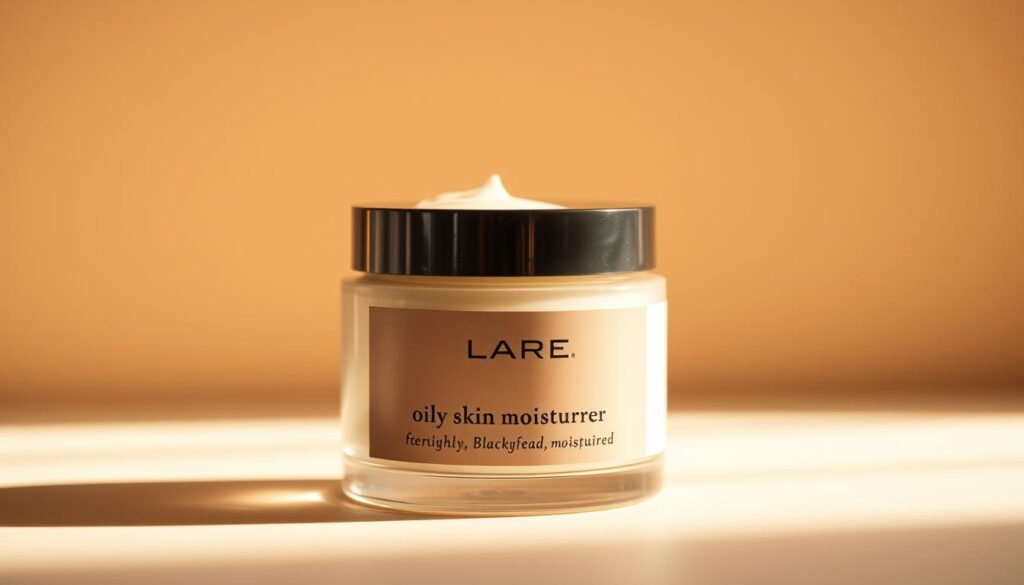
By selecting the right products for oily Skin prone to blackheads, you can effectively manage blackheads and achieve clearer, healthier-looking Skin.
Professional Treatments for Stubborn Blackheads
When blackheads persist despite consistent skincare efforts, it’s time to consider professional treatments for a lasting solution. These treatments can provide a more effective and efficient way to achieve clearer Skin.
Chemical Peels: Types and Benefits
Chemical peels are a popular professional treatment for blackheads, involving the application of a solution to remove the top layers of the Skin and unclog pores. Salicylic acid peels are particularly beneficial for blackheads due to their ability to penetrate deep into pores.
Light vs. Medium Depth Peels
Light peels are suitable for mild blackheads and require minimal downtime, while medium depth peels are more effective for stubborn cases but may involve a longer recovery period. The choice between them depends on the severity of the blackheads and Skin type.
Expected Results and Recovery Time
Results from chemical peels can vary, but most people notice an improvement in Skin clarity and reduced blackheads within a few days to a week. Recovery time ranges from a few days for light peels to several weeks for deeper peels.
Microdermabrasion for Blackhead Reduction
Microdermabrasion is a non-invasive exfoliating treatment that helps remove dead Skin cells and reduce the appearance of blackheads. It’s a gentle procedure suitable for most Skin types.
How the Treatment Works
Microdermabrasion uses fine crystals to exfoliate the Skin, improving texture and reducing blackheads. It’s often used in conjunction with other treatments for enhanced results.
Maintenance Schedule for Best Results
For optimal results, microdermabrasion sessions are typically recommended every 4-6 weeks. Consistency is key to maintaining clear Skin.
HydraFacial and Other Advanced Treatments
HydraFacial is a multi-step treatment that cleanses, exfoliates, and hydrates the Skin, providing immediate and long-term benefits. It’s particularly effective for oily Skin prone to blackheads.
Multi-Step Professional Procedures
Advanced treatments like HydraFacial involve a combination of cleansing, extraction, and hydration steps, tailored to individual Skin concerns. These procedures are customized to address specific Skin issues, including blackheads.
Cost Considerations and Value
While professional treatments can be more expensive than at-home care, they offer significant benefits in terms of efficacy and long-term results. It’s essential to consult with a skincare professional to determine the best treatment plan and budget accordingly.
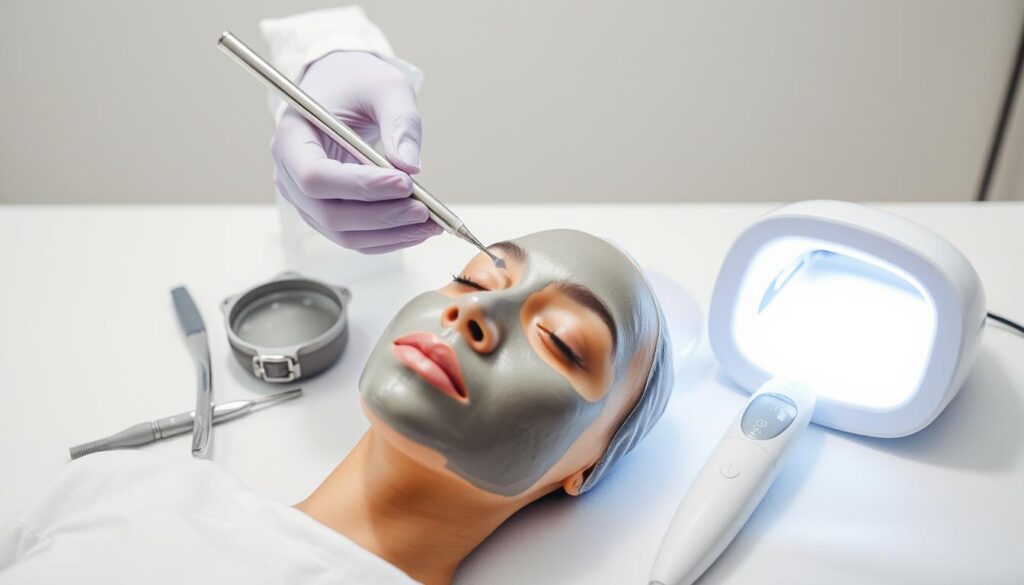
By incorporating professional treatments into your skincare routine, you can achieve clearer, healthier-looking Skin and reduce the occurrence of stubborn blackheads.
Creating an Effective Oily Skin Regimen
To tackle oily Skin and blackheads, it’s essential to develop a tailored skincare regimen. A well-structured routine helps in managing oil production, preventing clogged pores, and maintaining overall Skin health.
Morning Routine for Blackhead Prevention
Starting your day with the right skincare routine can significantly impact your Skin’s health. Begin with a gentle cleanser that effectively removes dirt without stripping your Skin of its natural oils.
Essential Steps and Products
Use a cleanser containing salicylic acid or glycolic acid to help exfoliate and unclog pores. Follow up with a toner to balance your Skin’s pH and prepare it for subsequent products.
Sunscreen Options for Oily Skin
Choose a lightweight, oil-free sunscreen with at least SPF 30. Look for products labeled “non-comedogenic” or “oil-free” to avoid clogging pores.
Evening Skincare Steps for Deep Cleansing
The evening routine is crucial for removing the day’s dirt, makeup, and impurities. Begin with a thorough makeup removal using a gentle remover.
Makeup Removal Techniques
Use a micellar water or a makeup remover wipe to gently remove makeup, followed by a cleanser to deep clean the pores.
Treatment Products for Overnight Results
Apply a treatment product containing retinoids or niacinamide to help reduce blackheads and improve Skin texture overnight.
Weekly Treatments to Incorporate
In addition to your daily routine, incorporating weekly treatments can enhance your skincare regimen.
Masking Schedule
Use a clay or charcoal mask once or twice a week to deep clean pores and control oil production.
Intensive Treatments and Timing
Consider exfoliating treatments or chemical peels for more intensive care. Timing depends on your Skin type and concerns, but generally, once a week is sufficient.
| Routine | Products | Frequency |
|---|---|---|
| Morning | Cleanser, Toner, Sunscreen | Daily |
| Evening | Makeup Remover, Cleanser, Treatment Product | Daily |
| Weekly | Clay/Charcoal Mask, Exfoliating Treatment | 1-2 times |
Common Mistakes to Avoid in Blackhead Treatment
Blackhead treatment often goes awry because of a few key mistakes that are easily avoidable. When dealing with blackheads, it’s crucial to understand that the wrong approach can lead to more harm than good.
Over-Cleansing and Stripping the Skin
One of the most common mistakes is over-cleansing, which can strip the Skin of its natural oils, leading to increased oil production and potentially more blackheads. Signs you’re doing too much include redness, irritation, and dryness.
Signs You’re Doing Too Much
If your Skin feels tight, looks red, or is irritated after cleansing, it’s a sign you’re overdoing it. Scaling back your cleansing routine can help restore your Skin’s balance.
How to Scale Back Appropriately
Reduce the frequency of your cleansing and exfoliating. Using gentle, non-comedogenic products can also help.
Using the Wrong Products for Your Skin Type
Using products not suited to your Skin type can exacerbate blackheads. Ingredients to avoid for oily Skin include heavy oils and comedogenic ingredients.
Ingredients to Avoid for Oily Skin
Look out for products containing mineral oil, petrolatum, and isopropyl myristate, which can clog pores.
Comedogenic Ratings Explained
Comedogenic ratings indicate a product’s likelihood of clogging pores. Opt for products labelled ‘non-comedogenic’ or ‘oil-free’ as part of your oily Skin routine.
Inconsistent Skincare Habits and Their Impact
Consistency is key in any skincare routine. Establishing a routine and sticking to it can significantly improve your Skin’s health.
The Importance of Routine
A consistent routine helps in maintaining the Skin’s health and preventing issues like blackheads.
Tracking Your Skin’s Progress
Keep a skincare diary to track changes, note what works, and adjust your routine accordingly. This can be a valuable part of your oily Skin routine.
When to Consult a Dermatologist
For those dealing with severe or persistent blackheads, a dermatologist can provide personalized guidance and treatment. While many cases of blackheads can be managed with proper skincare routines and over-the-counter products, some situations require professional attention.
Signs Your Blackheads Require Professional Help
If you’re experiencing blackheads that are persistent or worsening, it’s a clear sign that you need to consult a dermatologist. Blackheads that don’t respond to treatment or are particularly large and painful are indicators of a more serious issue.
Persistent or Worsening Conditions
If your blackheads continue to appear despite consistent skincare efforts, it’s time to seek help. A dermatologist can assess your Skin and provide a tailored treatment plan.
Pain or Inflammation Indicators
Pain or inflammation around blackheads is a red flag. It could indicate an underlying condition that needs medical attention. Using oily Skin products might help manage symptoms, but a dermatologist can address the root cause.
What to Expect at Your Dermatology Appointment
During your visit, the dermatologist will assess your Skin to determine the best course of treatment. This may involve examining your Skin, discussing your skincare routine, and potentially performing some diagnostic tests.
Common Assessment Procedures
The dermatologist may perform a visual examination of your Skin and ask about your medical history and current skincare products, including any oily Skin products you’re using.
Questions to Ask Your Dermatologist
It’s essential to be prepared with questions for your dermatologist, such as what treatments are available, how to manage your condition, and what products are most suitable for your Skin type.
Prescription Options for Severe Cases
For severe or persistent blackheads, dermatologists can prescribe treatments that are not available over-the-counter. These can include topical treatments or oral medications, depending on the severity of the condition.
Topical Prescription Treatments
Topical retinoids or other medicated creams can be prescribed to help manage blackheads and prevent future occurrences.
Oral Medications When Necessary
In more severe cases, oral antibiotics or other medications may be necessary to address underlying causes of blackheads, such as hormonal imbalances or infections.
Conclusion: Maintaining Clear Skin Long-Term
Maintaining a clear and healthy complexion requires commitment to a consistent oily Skin regimen. By incorporating the right oily Skin treatment into your daily routine, you can effectively manage blackheads and prevent future breakouts.
A well-structured skincare routine, combined with the right products and techniques, will help you achieve long-term results. Regular exfoliation, proper cleansing, and using products containing salicylic acid or retinoids can make a significant difference in your Skin’s health.
Staying committed to your skincare routine and being patient will ultimately lead to the clear, healthy Skin you desire. By following the tips outlined in this article, you can enjoy a clearer complexion and reduce the occurrence of blackheads.

